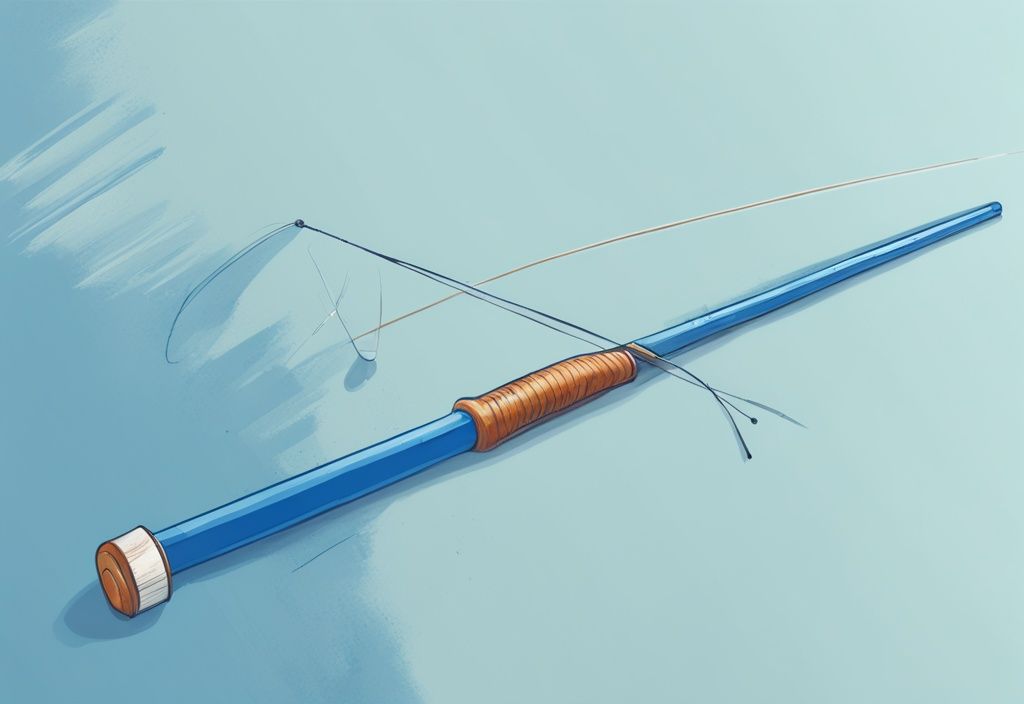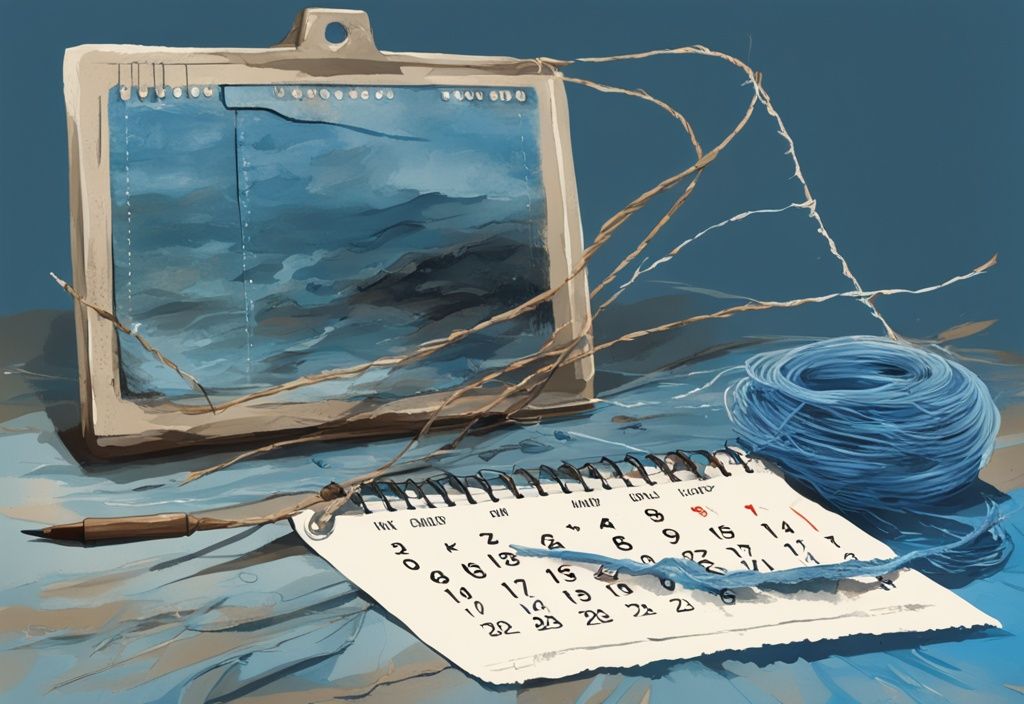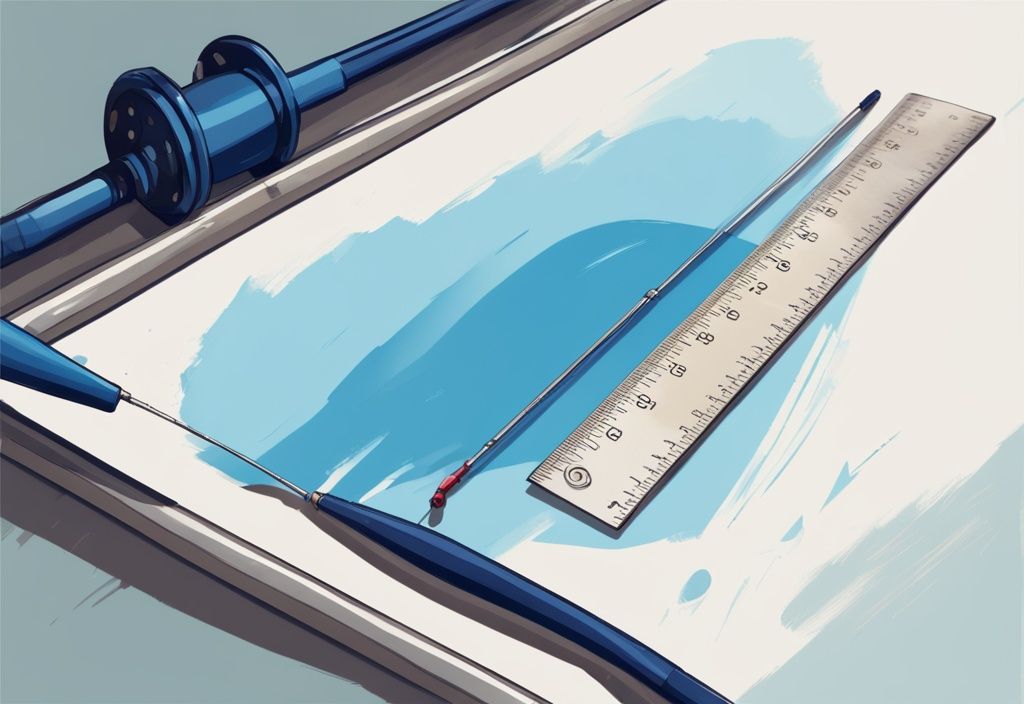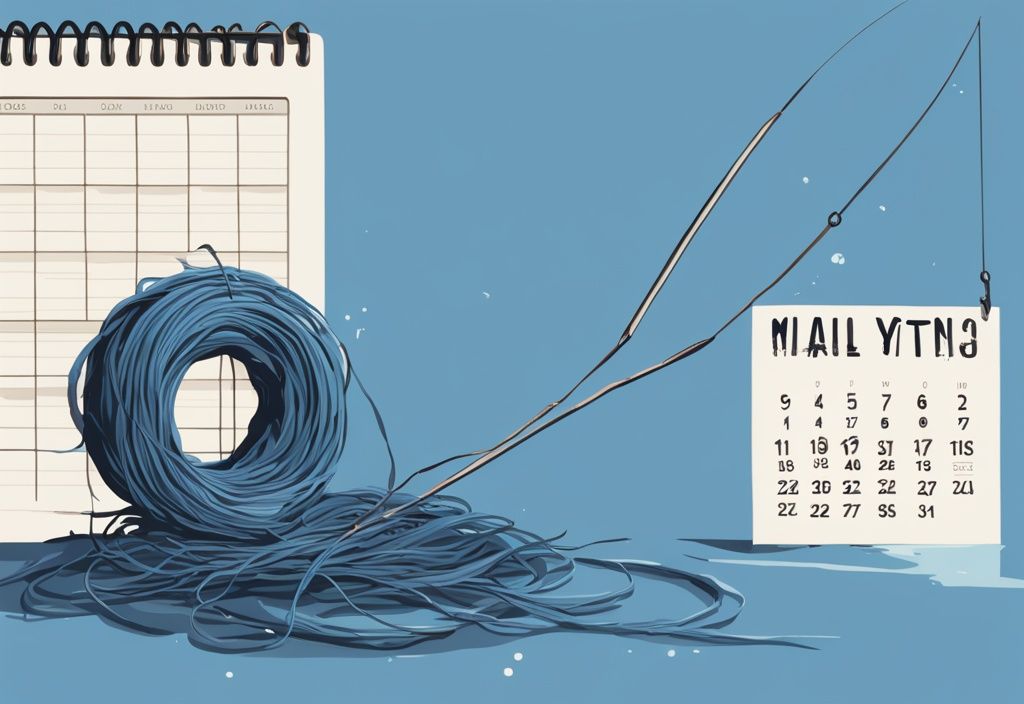Ever cast a beautiful, promising line only to see it snap at the crucial moment? Trust me, I’ve been there! It’s gut-wrenching and often leaves you wondering, “How long does a fishing line last?” While the answer varies due to factors like type of line, frequency of usage, and exposure to weather, we’ll aim to make it simpler for you.
In this no-nonsense guide, we’ll unravel the true lifespan of various fishing lines – from monofilament to braided, and provide practical tips on extending their shelf life. That way, you can avoid untimely snaps and keep reeling in those beauties, season after season.
So, let’s get our lines in order, shall we? After all, a reliable fishing line can mean the difference between a celebratory catch or a frustrating ‘one that got away’ story.
Key Factors Influencing the Lifespan of a Fishing Line
How the Type of Fishing Line Affects its Longevity
The type of fishing line you choose plays a critical role in determining how long it will last. Monofilament lines, made from nylon, are generally more susceptible to degradation from UV rays and temperature extremes. These lines tend to become weak and brittle over time, especially with prolonged exposure to sunlight, as ultraviolet (UV) radiation can cause degradation in the form of physical and chemical changes in susceptible materials, which you can learn more about [here](https://uvsolutionsmag.com/articles/2019/uv-degradation-effects-in-materials-an-elementary-overview/).
In contrast, fluorocarbon lines offer greater resistance to UV damage. However, they can fray under stress, particularly when rubbing against rough surfaces underwater. Braided lines, known for their exceptional durability, are the least impacted by UV rays and extreme temperatures. This makes them a reliable choice for long-term use.
Does Frequency of Use Impact a Line’s Lifespan?
How often you use your fishing line affects its longevity. Heavy fishing activity accelerates wear and tear, necessitating more frequent replacements. Monofilament lines, for instance, should be replaced after every trip if used heavily. For occasional anglers, an annual replacement may be sufficient.
Fluorocarbon lines can withstand heavy use up to three times a year, while casual fishers should aim to replace them at least once annually. Regardless, regular inspections for wear are essential to maintain the line’s integrity and performance.
How Exposure to Elements and Storage Conditions Can Shorten Your Fishing Line’s Life
Environmental factors and storage conditions significantly influence how long your fishing line will last. Monofilament lines degrade quickly under UV rays and temperature extremes, becoming brittle and prone to breakage.
While fluorocarbon lines are more resistant to UV rays, they are still vulnerable to environmental stress, compromising their durability. Braided lines offer better resistance to environmental damage but should still be stored correctly to maximize their lifespan.
To keep any fishing line in optimal condition, store it in a cool, dry place, away from direct sunlight and heat sources. Proper storage helps mitigate the risk of UV and temperature damage, ensuring your line remains reliable for longer periods.
Typical Lifespan of Different Types of Fishing Lines
- Monofilament
- Fluorocarbon
- Braided
Monofilament Fishing Line: How Long Does It Last?
Monofilament fishing line, made from nylon, is a favorite among anglers for its versatility and flexibility. However, its lifespan is heavily influenced by environmental conditions. Heavy users might want to replace their monofilament line after each fishing trip to keep performance top-notch. For occasional fishers, an annual replacement should keep the line reliable.

Unused monofilament line, on the other hand, can become brittle and lose strength after 2 to 3 years, especially due to UV exposure and temperature changes.
Storing it in a cool, dark place can help prolong its usability, but it’s generally wise not to exceed this timeframe. Ever notice how the sun can bake almost anything into a frail shadow of its former self? Well, your fishing line isn’t immune to that either.
Fluorocarbon Fishing Line: Expected Lifespan and Durability
Fluorocarbon fishing line stands out for its low visibility underwater and robust resistance to environmental stressors. This line can last several seasons, providing a more durable option for dedicated anglers. Heavy use may necessitate replacement up to three times a year to avoid fraying from stress, while casual fishers can manage with yearly refreshes.
One of fluorocarbon’s great strengths is its impressive shelf life, which can reach up to 7 to 10 years if stored away from the elements. Despite its UV resistance, regular checks are essential since high-stress conditions can still cause wear and tear. Imagine that, a line that can outlast most of your favorite gear—talk about resilience!
Braided Fishing Line: Lifespan and Factors That Could Shorten It
When pondering how long a fishing line lasts, braided lines often come up as the champions of durability. These lines can serve anglers for up to five years or more, and some even claim they last a lifetime with meticulous care. Unlike the others, braided lines shrug off UV rays and temperature fluctuations.
However, it’s wise to replace them after 10 years if they’ve been sitting idle. Key here is to regularly inspect rod guides and reel parts because worn-out equipment can damage even the toughest braided lines. Ever felt the elation of pulling in a hefty catch only for your line to snap at the critical moment? A smooth-running reel and intact guides can prevent such heartbreak.
With regular checks and proper care, your braided line can remain as steadfast as your passion for fishing. It’s like having a trusty old friend on the water, always ready for the next adventure.
Tips for Extending Your Fishing Line’s Lifespan
Here’s where we’ll dive into some tried-and-true methods to help you keep your fishing line in top notch condition for as long as possible. From smart storage solutions to routine maintenance habits, these insights will ensure you’re always ready for that next big catch.

Best Practices for Storing Your Fishing Line
Proper storage can substantially extend the lifespan of your fishing line. The first step is ensuring it is kept in a cool, dry place, away from direct sunlight and heat sources. This is crucial as UV rays and temperature extremes can degrade the line material over time.
Using containers or bags to shield the line from UV rays and temperature fluctuations adds an extra layer of protection. Furthermore, it’s essential to store spools tightly to prevent line memory and deformation, which can compromise the line’s strength and performance.
By following these best practices, anglers can significantly preserve the quality and durability of their fishing lines.
Maintenance Habits That Can Improve Your Line’s Longevity
Regular maintenance is key to extending the life of your fishing line, particularly in challenging environments like saltwater. After each use, especially in saltwater, it’s important to thoroughly clean the line to remove salt, algae, and dirt, which can cause it to deteriorate.
Inspecting the line before and after fishing trips for signs of wear such as fraying, discoloration, and nicks is crucial for detecting potential issues early. Additionally, conducting periodic line strength tests by tying the line to a fixed object and applying stress can help ensure it remains reliable.
Finally, minimize frequent knotting and unknotting as it causes undue wear. By adopting these maintenance habits, anglers can better understand how long a fishing line lasts and take steps to maximize its use.
Incorporating these storage and maintenance practices into your routine will help you determine the lifespan of your fishing line and keep it in optimal condition for longer, ensuring more successful and enjoyable fishing experiences.
When Should You Consider Replacing Your Fishing Line?
Fishing lines are the lifeline between you and that prized catch, and knowing when to replace them can make all the difference in a successful fishing adventure. Let’s dive into the specifics you need to watch out for, ensuring your line is always in top shape.
Identifying Signs of Wear and Tear
Understanding how long a fishing line lasts is key to avoiding heartbreak on the water. Trustworthy lines don’t last forever, so keep a vigilant eye on their condition. Your first clue might be fraying, which seriously compromises the line’s integrity. Discoloration is another big red flag, hinting at UV damage or chemical corrosion.
Have you ever noticed small nicks or cuts on your line? They can come from rocks, sharp objects, or even the fish itself. These seemingly minor damages can lead to major failures when you’re reeling in a catch. Mildew, often appearing in lines stored in damp conditions, is yet another cause for concern. And don’t forget about stiffness—a line that’s lost its flexibility won’t perform well.
For a quick check, tie your line to a fixed object and apply gentle, increasing pressure. This test can reveal if it’s still up for the challenge. Spot any of these issues? It’s time for a new line, ensuring you avoid any sudden breaks when it matters most.
How Different Types of Fish Can Affect Your Line’s Longevity
Ever thought about how the fish you target can impact your line’s lifespan? Larger and stronger species put more strain on your line, speeding up wear and tear. Just picture the tug-of-war with a hefty catfish or a feisty bass—these battles can stretch and weaken your line in no time.

Don’t even get me started on saltwater species. Their vigorous fights and rough habitats demand lines that can handle intense pressures and abrasions. Oceanic elements are tough on your gear, pushing you to replace your line more frequently if you’re tackling these resilient swimmers.
Using a line suited to the specific demands of your target fish not only boosts performance but also extends its life, saving you from frequent replacements. Trust me, keeping your line in prime condition ensures every fishing trip is as smooth and enjoyable as possible.
Conclusion
How long does a fishing line last? That’s the million-dollar question every angler ponders. Its lifespan hinges on a handful of crucial factors—type of line, how often you cast, and the environmental conditions you’re up against.
Take monofilament lines, for example. They’re like vigilant sunbathers, highly sensitive to UV rays and temperature swings. If you’re using them heavily, they’ll need replacing more often. On the flip side, fluorocarbon lines are less phased by UV but can begin to fray when put under stress. Braided lines? They’re the Herculean heroes here, praised for their durability and resilience against most environmental setbacks.
Got a game plan for taking care of those lines? Proper maintenance and storage can add years to their lifespan. Store your lines in a cool, dry spot, away from direct sunlight, and make sure they’re tightly wound to avoid memory and deformation. Regular cleaning is imperative, especially after saltwater fishing trips. Salt, algae, and dirt are the villains you need to wash away. Don’t forget to inspect your lines periodically and test their strength; that way, they’ll remain your reliable companion out on the water.
So there you have it. By understanding how long a fishing line lasts and following these tried-and-true practices, you’re not just extending its life—you’re ensuring a more enjoyable and successful fishing experience. Who wouldn’t want that, right? Keep these tips in your tackle box, and you’ll be all set for many great fishing adventures ahead.
Frequently Asked Questions About Fishing Line Lifespan
Understanding how long your fishing line lasts is crucial for a successful and enjoyable fishing experience. Below, we dive into some common queries that anglers often have about the lifespan of different types of fishing lines and how to maintain them.
How Often Should I Replace a Monofilament Fishing Line?
If you’re the kind of angler who’s got an itch for fishing every weekend, it’s best to replace your monofilament fishing line after every trip. Trust me, nothing ruins a perfect fishing day like a line that snaps at the wrong moment.
For those who cast their lines occasionally, changing it out once a year should keep your line in top shape. But what if your reel sits in the garage for ages? Well, even if it’s unused, you’ll want to discard it after 2 to 3 years. No one likes a brittle, unreliable fishing line. It’s always better to be safe than sorry!
Can Bad Storage Practices Damage Your Fishing Line?
Absolutely, bad storage can be the silent killer of your fishing line. Proper storage is a game-changer. Keep that line away from UV rays, which can degrade it faster than you might think. Make sure to store it in a cool, dry place. Excessive heat and moisture are like kryptonite; they can cause internal fractures, making your line brittle and prone to breaking when you least expect it.
Is a Braided Fishing Line More Long-lasting?
Oh, definitely! Braided fishing lines are tough as nails and can last you up to five years or even longer. They laugh in the face of UV rays and extreme temperatures.
With proper care, some anglers—myself included—find that these lines can practically last a lifetime. It’s like having a reliable old friend in your tackle box, always ready for the next big catch. Just make sure to maintain them well, and they’ll stay with you through countless fishing adventures.


